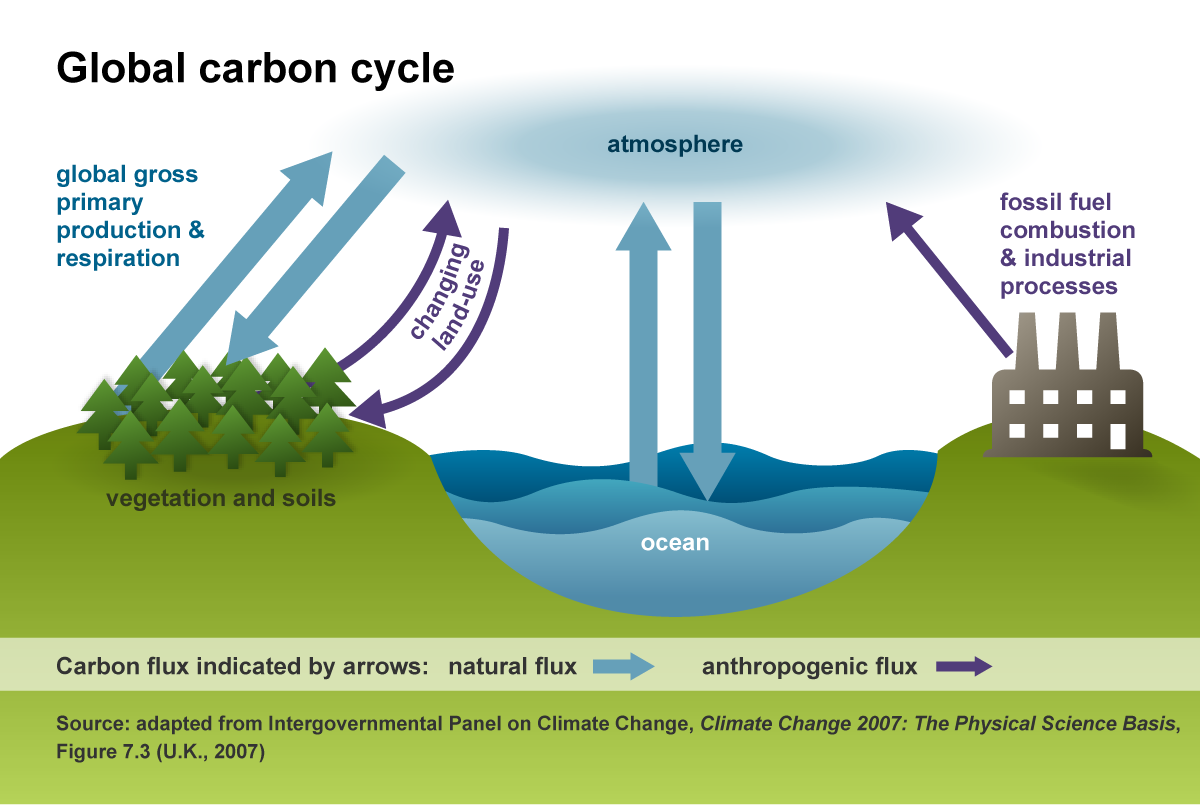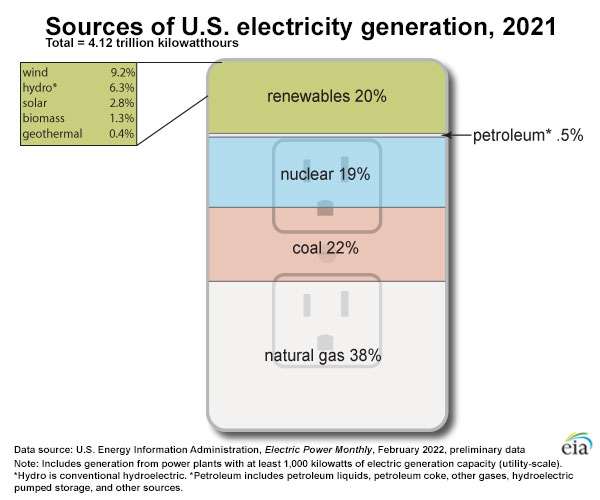Chapter Contents:
- Climate is a System
- Measuring Climate
- Greenhouse Gases and Global Temperature
- Natural Causes of Climate Change
- Summary and Additional Resources
Page Topics: Overview, The Greenhouse Effect and the Greenhouse Metaphor, Why all the Fuss about Carbon Dioxide?, and Measuring CO₂ and Other Gases in the Atmosphere.
Image above: Double rainbow over a pond near Brooktondale, New York. Photograph by Alexandra Moore for PRI’s Earth@Home project (CC BY-NC-SA 4.0 license).
Overview
The Earth’s surface temperature is controlled by the only major source of energy in our solar system: the sun. Radiation from the sun reaches the Earth throughout the year, but the Earth’s temperature depends on the complex interaction of different components of the solar radiation with the atmosphere and with the Earth’s surface.
Sunlight consists of radiation at a variety of wavelengths. The shortest wavelengths (ultraviolet light) are rapidly absorbed and filtered by the atmosphere and do not reach the Earth’s surface. The same is true for the longest wavelengths (infrared light or thermal radiation). The middle wavelengths (visible light) pass through the atmosphere largely unobstructed and allow us to see the world around us
When visible light from the sun is absorbed by the Earth’s surface, its energy is transformed to heat energy that increases the temperature of the surface. Some of this energy is re-emitted back into the atmosphere as infrared light. Since the atmosphere absorbs infrared light, some of this light is captured by the atmosphere and then reemitted both up into space and back down to the surface again, effectively trapping heat. This phenomenon is called the greenhouse effect and depends on the levels of greenhouse gases—carbon dioxide, methane, water vapor, and others—that make up only a tiny fraction of the gases in our atmosphere.
The greenhouse effect. 1, Energy from the sun reaches the Earth as shortwave radiation. 2, Some shortwave radiation is reflected back to space. 3, Radiative equilibrium. Earth’s surface emits the same amount of energy that it absorbs from the Sun – but at longer wavelengths because the Earth is cooler than the sun. When this long-wavelength radiation encounters greenhouse gas molecules in the atmosphere the molecules absorb the radiation, which warms the atmosphere, until the emitted energy equals the absorbed energy. 4, Energy spectrum of the Sun and Earth. Both objects emit a range of wavelengths, however, the sun emits most of its energy at the short wavelengths of the visible part of the spectrum, while Earth emits all of its energy in the infrared part of the spectrum. The peak wavelength corresponds to the temperature of the object; short = hot, long = cool. In this figure, the Earth’s spectrum is shown with a vertical exaggeration of ~1,000,000x. Note change in horizontal scale at ~3500 nm. Original image from “Climate Change Past Present & Future: A Very Short Guide” by Allmon et al. (2010); modified by Alexandra Moore and Jonathan R. Hendricks for PRI’s Earth@Home project (CC BY-NC-SA 4.0 license).
The surface of the Earth, therefore, is heated both by direct radiation from the sun, but also by this trapped and retransmitted radiation. This greenhouse effect is very important for life on Earth. Without it, the average surface temperature would be below the freezing point of water, and there would be little or no liquid water, and therefore possibly no life on Earth!
On the scale of billions of years, the Earth’s climate has been controlled by the balance between its distance from the sun and the composition of its atmosphere. If we compare Earth to its planetary neighbors, Mars and Venus, we see what might have happened on Earth, but didn’t. Earth’s original atmosphere came from volcanism that emitted gases from the planet’s interior. The high concentration of CO2 and methane (CH4) in this early atmosphere kept the Earth warm when the sun was younger and fainter. This is known as the faint young sun paradox. Some of the first life on Earth put oxygen into the atmosphere by the process of photosynthesis, and drew down CO2. Lower levels of greenhouse gases in the atmosphere helped to compensate for the brightening sun, which otherwise would have warmed Earth too much for living organisms, or even liquid water, to be present. Thus, the greenhouse effect allowed life to exist on Earth when it might not have otherwise.





